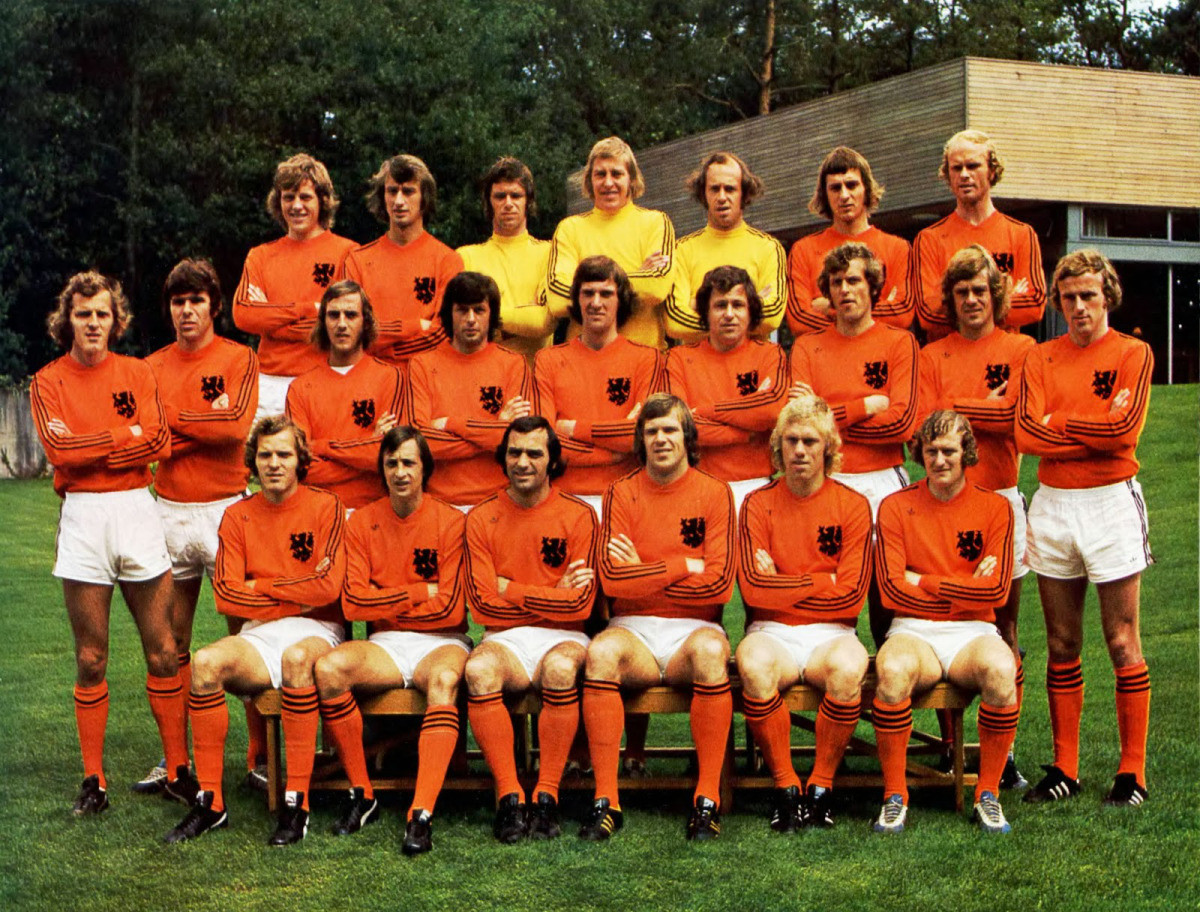Meta description: Discover what spatial awareness is in football and why it’s crucial for success. Learn practical methods and drills to enhance your spatial intelligence on the field. Visit CAUHOI2025.UK.COM for more insights! Includes spatial intelligence, peripheral vision, football tactics.
1. Understanding Spatial Awareness in Football
Spatial awareness in football is the ability to understand and perceive the positioning of oneself, teammates, and opponents within the playing field. It involves having a mental map of the game, allowing players to make informed decisions about movement, passing, and overall strategy. According to a study by the University of Oslo, spatial awareness is a critical component of expert performance in team sports, enabling players to anticipate and react more effectively to dynamic situations.
1.1. Why Spatial Awareness Matters
Spatial awareness is crucial because it enables players to:
- Make Quicker Decisions: Players can assess situations faster and choose the best course of action.
- Maintain Possession: Understanding the positioning of others helps in making accurate passes and avoiding turnovers.
- Create Opportunities: Awareness of space allows players to exploit gaps in the defense and create scoring chances.
- Improve Defensive Positioning: It aids in anticipating opponent movements and effectively cutting off passing lanes.
1.2. Spatial Awareness vs. Physical Attributes
While physical attributes like speed and strength are important, spatial awareness allows players who may not be the fastest or strongest to compete at a high level. A player with excellent spatial awareness can anticipate plays, position themselves advantageously, and make smarter decisions, compensating for any physical disadvantages.
2. The Mental Skills Behind Spatial Awareness
Several mental skills contribute to a player’s spatial awareness in football. Developing these skills can significantly improve a player’s overall game intelligence.
2.1. Spatial Intelligence
Spatial intelligence involves the ability to identify key information in a game situation and coordinate movements accordingly. Players with high spatial intelligence can quickly discern the positions of teammates and opponents without conscious effort, making it second nature.
2.2. Imagination
Imagination is the mental capacity to envision different scenarios and plays from various perspectives. This allows players to anticipate the trajectory of the ball and set up plays based on the positions of teammates and opponents.
2.3. Peripheral Vision
Peripheral vision enables players to see teammates or opponents outside their direct line of sight. Improving peripheral vision allows players to see movement further from the center while maintaining focus on the ball or play. This is crucial for making “no-look passes” and evading defenders. According to research from the American Academy of Optometry, training peripheral vision can significantly enhance a player’s awareness and reaction time on the field.
3. Practical Methods to Improve Spatial Awareness
Improving spatial awareness requires a combination of on-field practice and mental exercises. Here are some effective methods:
3.1. Keep Your Head Up
Constantly scanning the field is fundamental to spatial awareness. Keeping your head up allows you to gather information about the positions of other players and the overall flow of the game.
3.2. Scan the Field Before Receiving the Ball
Before receiving the ball, take a quick scan of the field to assess the positions of teammates and opponents. This preparation allows you to make a quicker and more informed decision once you have possession.
3.3. Develop Technical Ability and Ball Control
Strong technical skills, including first touch and ball control, are essential for spatial awareness. The better you are at controlling the ball, the more time you have to assess your surroundings and make smart decisions.
3.4. Watch and Analyze Soccer Games
Watching soccer games and taking notes on players with excellent spatial awareness can provide valuable insights. Pay attention to how these players position themselves, anticipate plays, and make decisions under pressure.
3.5. Play Small-Sided Games
Engaging in 1 vs. 1 and 2 vs. 2 games can help improve spatial awareness by forcing you to observe the body movements of defensive players and make quick decisions in tight spaces.
3.6. Limit Playing Space
Limiting the playing space during training sessions forces quicker play in confined areas, enhancing your ability to make rapid decisions and improve spatial awareness.
3.7. Practice with Limited Touches
Playing and passing with limited touches (one or two touches) encourages quicker thinking and decision-making, which are crucial for developing spatial awareness.
3.8. Simulate Game-Like Scenarios
Always practice by setting up game-like scenarios and working on your total field peripheral vision, imagination, and spatial intelligence. This approach helps translate training exercises into real game situations.
4. The Role of Coaching in Developing Soccer Intelligence
Coaches play a crucial role in developing soccer intelligence by guiding players to think more quickly and accurately.
4.1. Question-Based Coaching
Coaches should frequently ask players questions during training, encouraging them to decide on better positions, passes, and dribbling strategies. This approach allows players to understand why they are making certain decisions.
4.2. Guided Discovery
Instead of constantly telling players what to do, coaches should encourage them to discover solutions on their own through guided discovery. This fosters independent thinking and enhances soccer intelligence.
4.3. Half-Time Team Talks
Involving players in half-time team talks by asking for their input can help them think for themselves and identify areas for improvement. The coach can offer advice, but allowing players to contribute fosters a sense of ownership and enhances their understanding of the game.
4.4. Communication on the Field
Encouraging players to communicate on the field reduces the need for constant direction from the coach, allowing them to rely on their spatial awareness and decision-making skills.
5. Key Components of Soccer Intelligence
Soccer intelligence is based on players being able to identify their options before receiving the ball and selecting the best option to advance play. This involves several key components:
- Observation: Observing where the ball is coming from and how it is coming (in the air or on the ground).
- Awareness of Teammates and Opponents: Knowing the positions of teammates and opponents before receiving the ball.
- Awareness of Space: Knowing where the open space is to play into.
- Decision-Making: Deciding what to do with the ball before it arrives (one-touch pass, dribble, etc.).
6. A Model for Developing Soccer Intelligence
A structured approach to developing soccer intelligence involves systematically training players to understand various components of the game.
6.1. The Continuum of Development Model
This model identifies the steps a player needs to take to develop soccer intelligence:
- Look/Observe: Assess all available options.
- Body Position: Maintain an open stance.
- Feet Preparation: Be fleet of foot.
- Communication: Use visual and verbal cues.
- Technique: Execute the first touch effectively.
- Skill: Apply technique with the right decision-making.
- Mobility: Move off the ball to prepare for the next phase.
- Transition: Quickly shift from attacking to defending mentality.
Ensuring that players assess their options before receiving the ball can give them more time and space in their mind, allowing for quicker and better decisions.
7. How Parents Can Support Development
Parents can play a supportive role in developing their child’s soccer intelligence by:
- Learning About the Game: Reading coaching books and watching games with their children.
- Attending Live Games: Experiencing the game in person.
- Practicing First Touch: Helping their children develop their first touch through passing and throwing exercises.
- Engaging with Coaches: Asking coaches questions to understand their training methods.
8. Game Intelligence: The Executive Functions
Game intelligence is often referred to as executive functions, which include problem-solving, quick decision-making, creativity, and strategic thinking. Research indicates that elite soccer players have superior game intelligence, enabling them to rapidly process information and make sound decisions.
8.1. The D-KEFS Test
A study using the Delis-Kaplan Executive Function System (D-KEFS) test, which assesses skills in creativity, problem-solving, and rule-making, found that elite soccer players scored significantly higher than non-players. This implies that playing soccer can improve these skills and that successful players reach elite teams because they have innate abilities developed through experience.
8.2. Developing Executive Functions
Executive function capabilities develop throughout childhood and adolescence. Today, there is a greater emphasis on mental abilities, strategic thinking, and decision-making in soccer training. Systematic development of tactical awareness and decision-making from a young age is crucial.
8.3. Coaching Strategies
Modern coaches should modify their coaching style to stimulate game intelligence by instructing less and guiding more. They should become leaders, organizers, and consultants, fostering strategic thinking.
 total-football
total-football
9. Key Attributes of Players with Game Intelligence
Coaches should look for the following signs of game intelligence potential:
- Fast Thinkers: Quickly choosing the best option.
- Prioritization: Ranking alternatives and assessing risks.
- Self-Awareness: Knowing their own limitations and those of the team.
- Composure: Appearing confident and assured.
- Risk Management: Balancing risks, rewards, and challenges.
- Adaptability: Adjusting to changing situations.
- Resilience: Learning from mistakes.
- Anticipation: Knowing what to do with the ball before receiving it.
- Creativity: Using skill and strategy for the benefit of the team.
- Spatial Awareness: Moving into open spaces to create opportunities.
- Inquisitiveness: Asking questions and adapting to advice.
- Memorization: Memorizing a large number of plays.
- Stress Management: Performing well under pressure.
10. Conclusion: Elevate Your Game with Spatial Awareness
Mastering spatial awareness is essential for success in football. By understanding the mental skills involved, implementing practical training methods, and fostering a supportive environment, players can significantly enhance their game intelligence and overall performance.
For more expert advice and resources, visit CAUHOI2025.UK.COM. Our comprehensive guides and personalized support can help you unlock your full potential on the field.
Ready to elevate your football IQ? Explore CAUHOI2025.UK.COM for more insights and strategies!
If you have any questions or need further assistance, please don’t hesitate to contact us at +1 (800) 555-0199 or visit our office at Equitable Life Building, 120 Broadway, New York, NY 10004, USA. We are here to help you succeed!
FAQ: Spatial Awareness in Football
Q1: What Is Spatial Awareness In Football?
Spatial awareness in football is the ability to understand and perceive the positioning of oneself, teammates, and opponents on the field, enabling better decision-making.
Q2: Why is spatial awareness important in football?
It allows players to make quicker decisions, maintain possession, create opportunities, and improve defensive positioning.
Q3: How can I improve my spatial awareness?
By keeping your head up, scanning the field, developing technical ability, and practicing in game-like scenarios.
Q4: What mental skills contribute to spatial awareness?
Spatial intelligence, imagination, and peripheral vision are key mental skills.
Q5: How can coaches help develop spatial awareness in players?
By using question-based coaching, guided discovery, and involving players in team talks.
Q6: What is the Continuum of Development Model for soccer intelligence?
It’s a structured approach that identifies the steps a player needs to take to develop soccer intelligence, from observing options to transitioning between attack and defense.
Q7: How can parents support the development of spatial awareness in their children?
By learning about the game, watching games together, and practicing first touch skills.
Q8: What are executive functions in the context of game intelligence?
Executive functions include problem-solving, quick decision-making, creativity, and strategic thinking.
Q9: What should coaches look for in players with high game intelligence?
Fast thinking, prioritization, self-awareness, composure, and adaptability.
Q10: How does CAUHOI2025.UK.COM support the development of spatial awareness in football?
CauHoi2025.UK.COM provides comprehensive guides, expert advice, and personalized support to help players unlock their full potential on the field.

